Meet Envoyer.io (part 2)
- Transfer
Envoyer is a new service from Taylor Otwell, creator of Laravel. Already now you can watch a series of screencasts on Laracasts about this service. This is the second and last part of the description of this service.
Meet Envoyer.io (Part 1)
This section will describe the more advanced features of Envoyer.
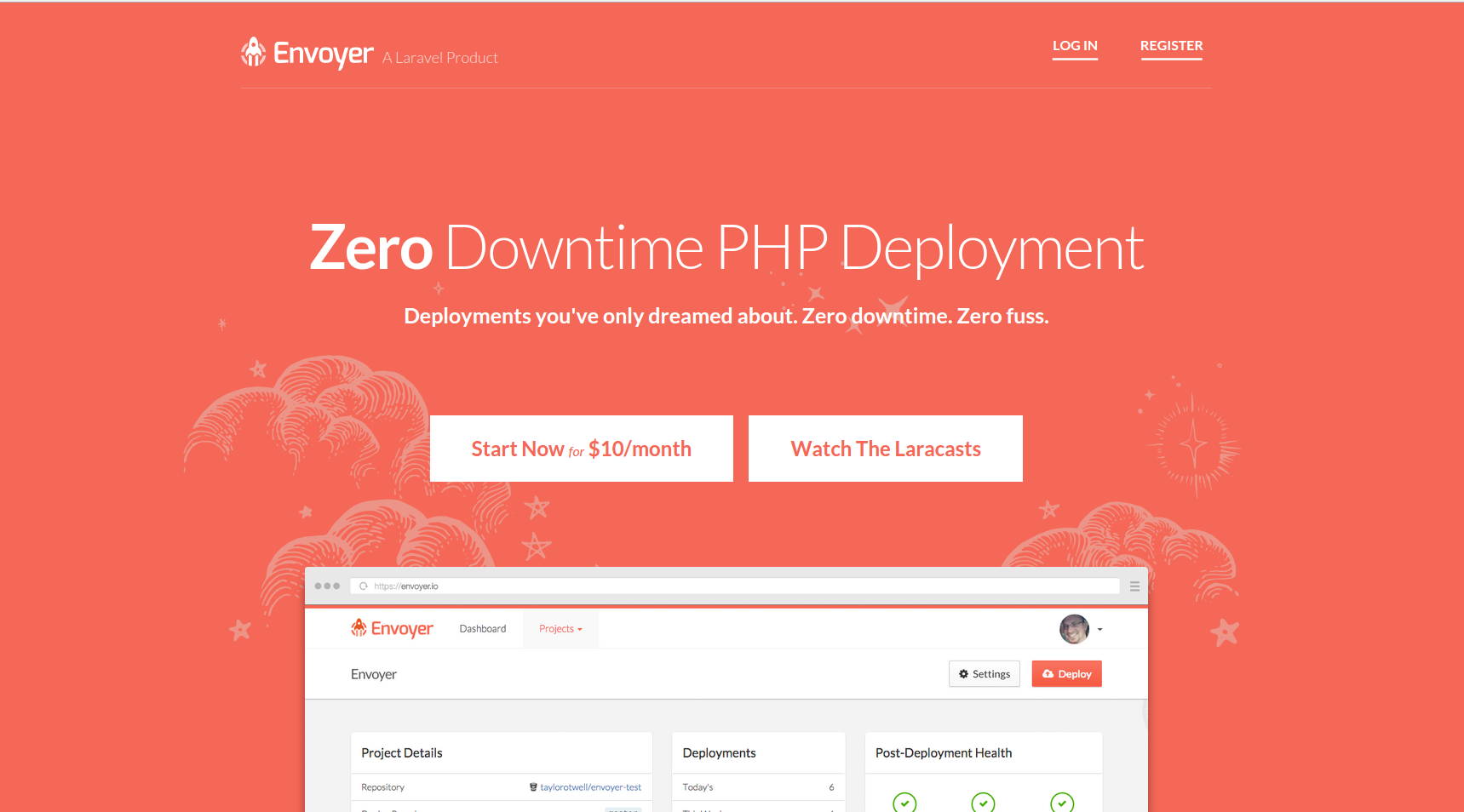
Envoyer has 4 steps in the deployment process, and you, in turn, can execute any of your scripts before and after any of these steps. These steps are: Clone a new release , Install composer dependencies , Activate a new release, and Remove old releases .
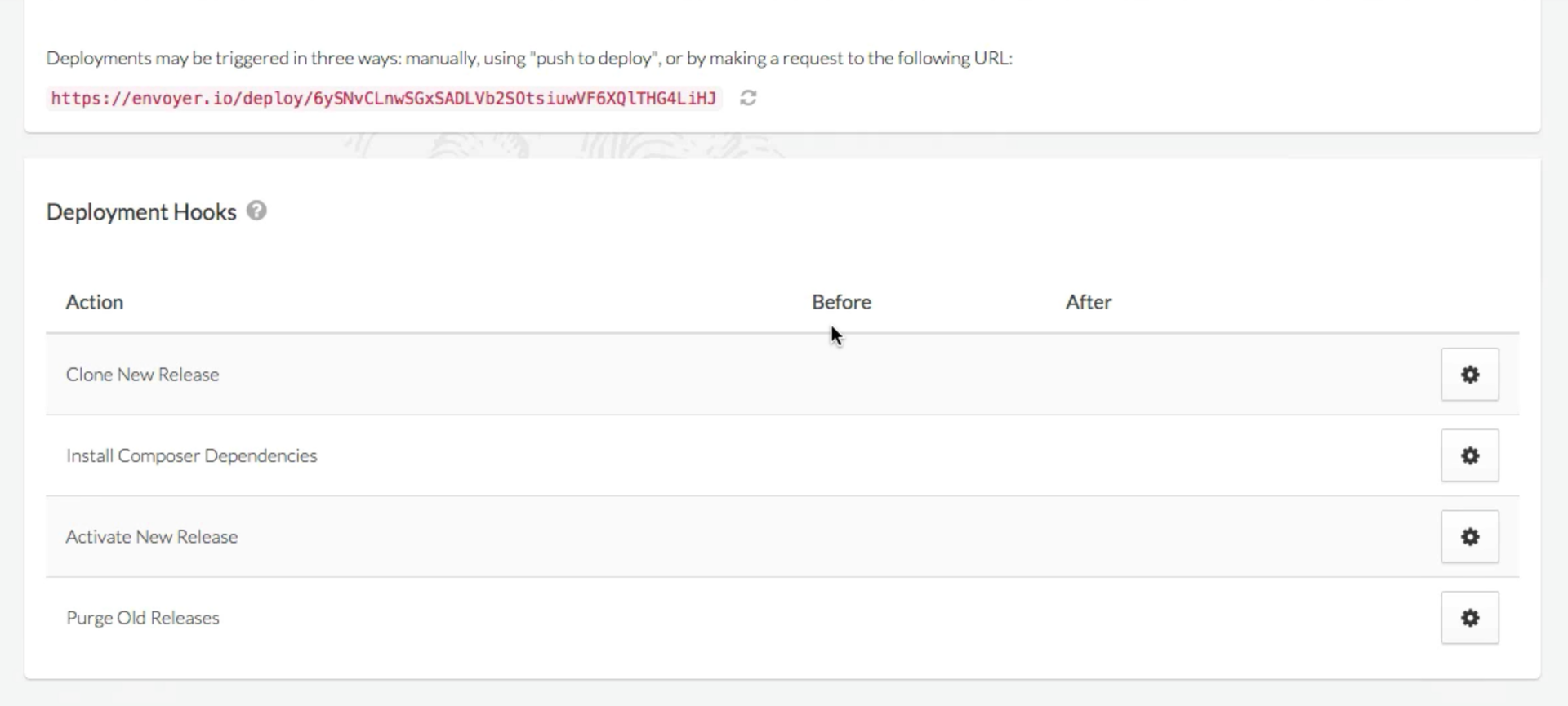
Near each step there is a “gear” button, clicking on it brings you to the next screen:

There you can add hooks before and after the selected step. Click on Add Hook in the part you need.
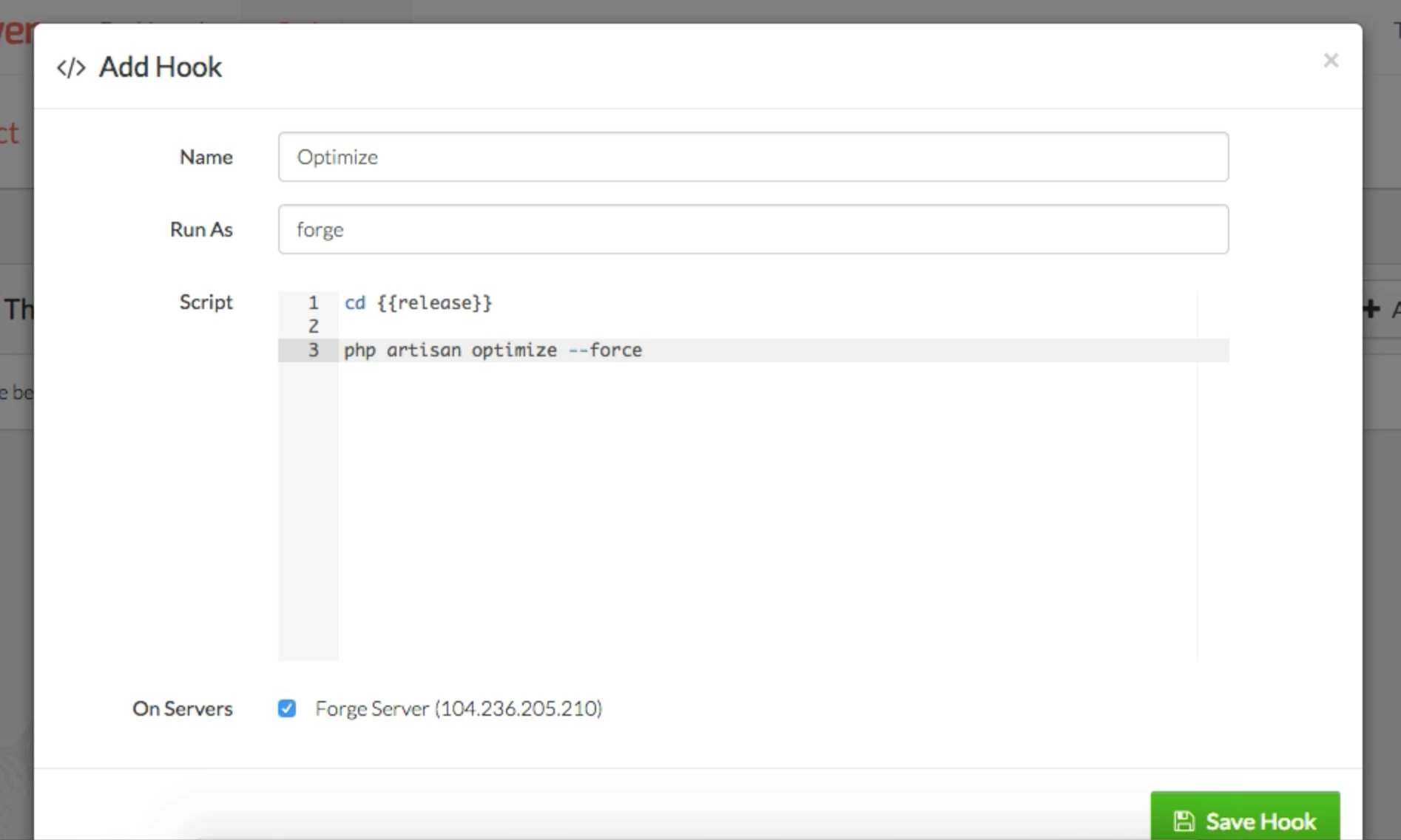
As you can see, for each hook you can specify your name, specify the user under which you want to execute the script, and the body of the hook, which has access to the variable
Note that you can also use drag & drop to change the execution order of hooks.
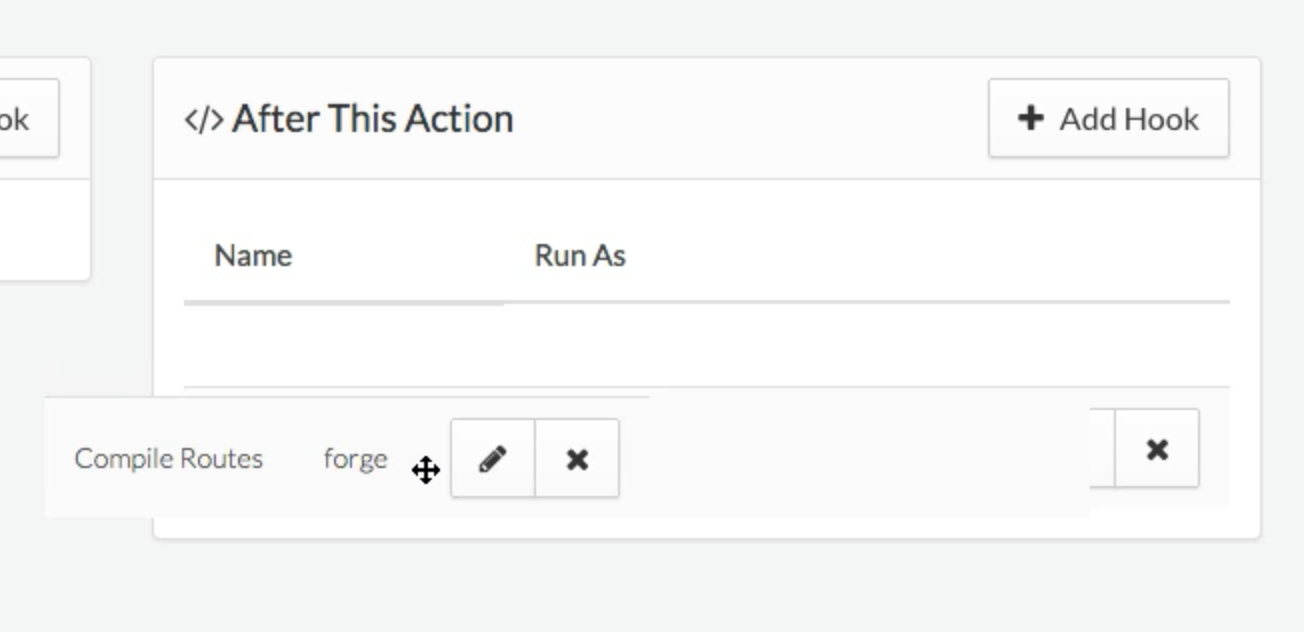
But what if you performed a new deployment and realized that you had broken everything? Normally, you would have to connect to the server via ssh,
Using Envoyer, your previous release will be operational in the folder
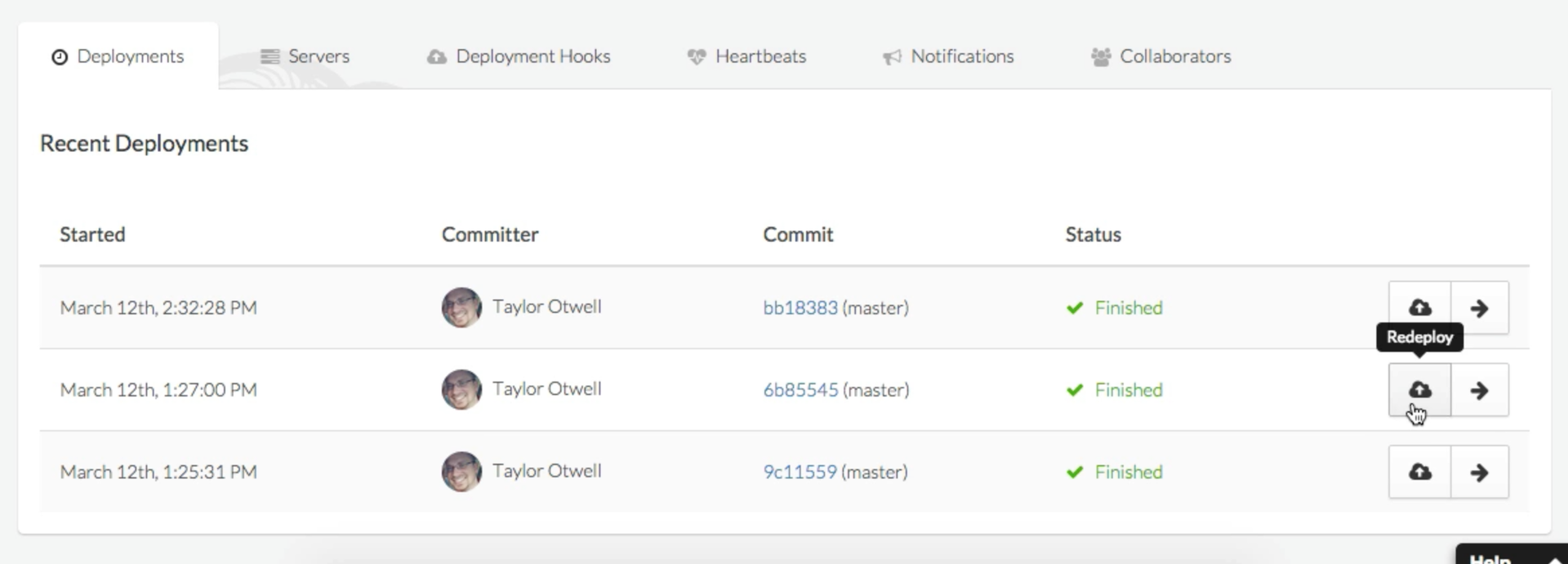
You might notice the Post-Deployment Health section on the project dashboard. There are icons for New York, London and Singapore - three regions from which Envoyer checks the availability of your application. Until you enter the Health Check URL, these icons will be question marks.
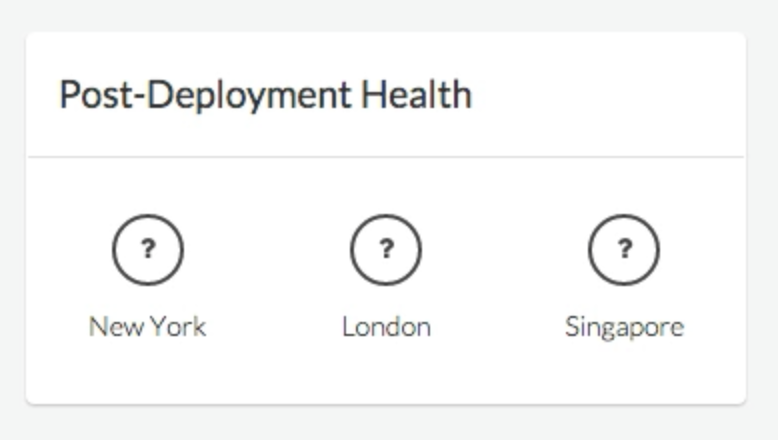
Each project can have a Health Check URL that will be called by Envoyer after each deployment. You can edit this URL in the project settings.
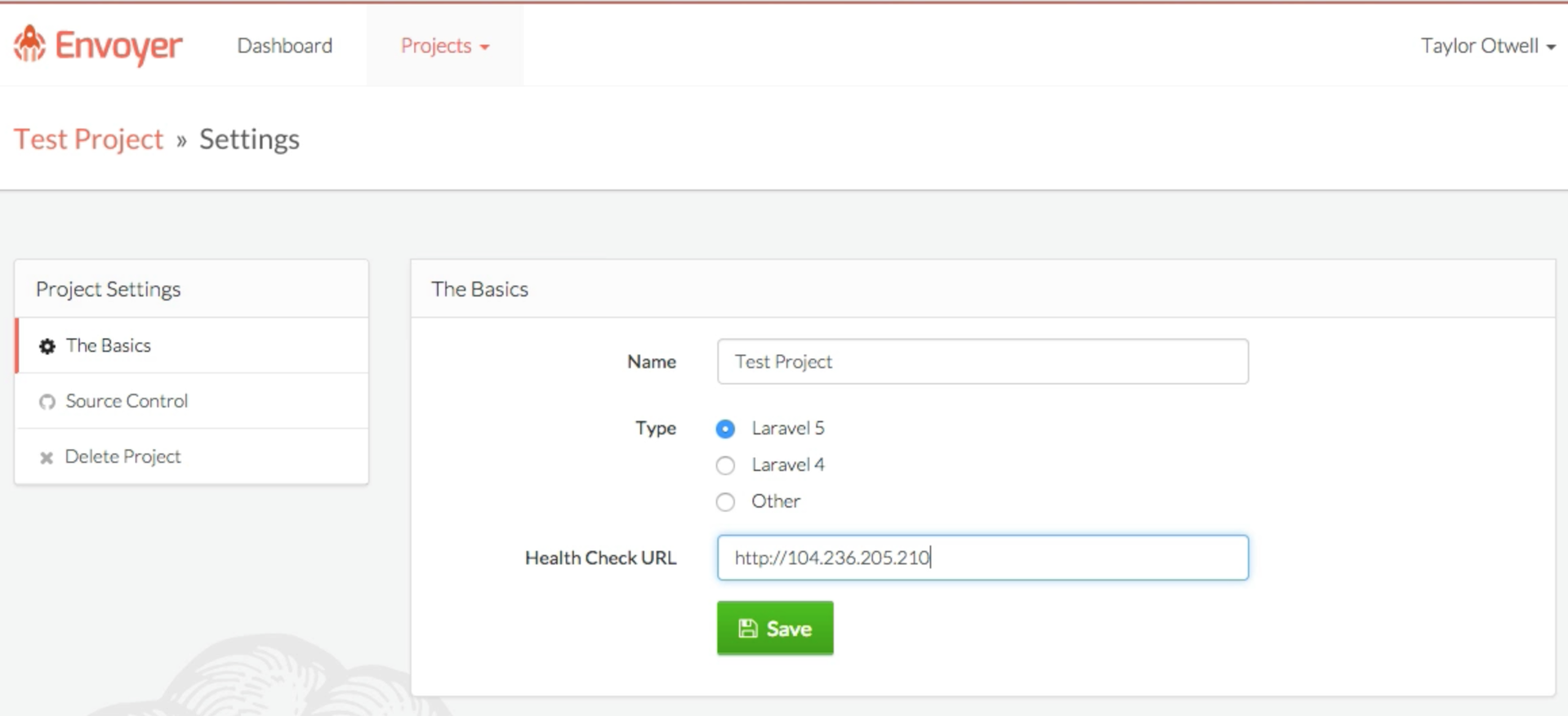
After the deployment, Envoyer looks at the HTTP response from the specified URL, and check if the response code is
If all is well, then you will see green checkmarks.
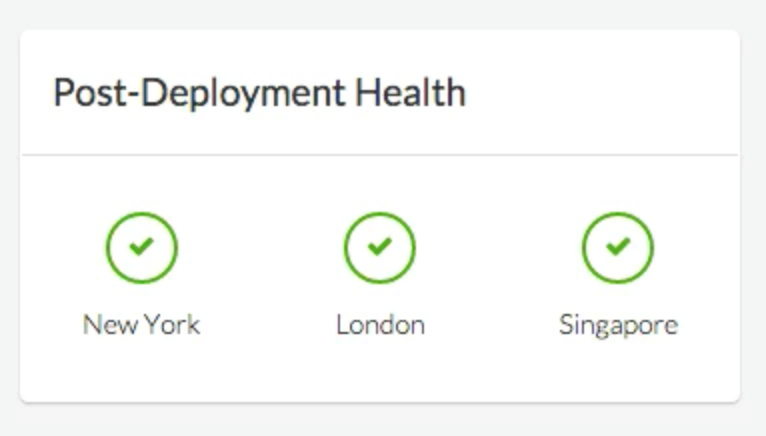
If something breaks, you will see red crosses (and then you most likely will need the “Cancellations” section):
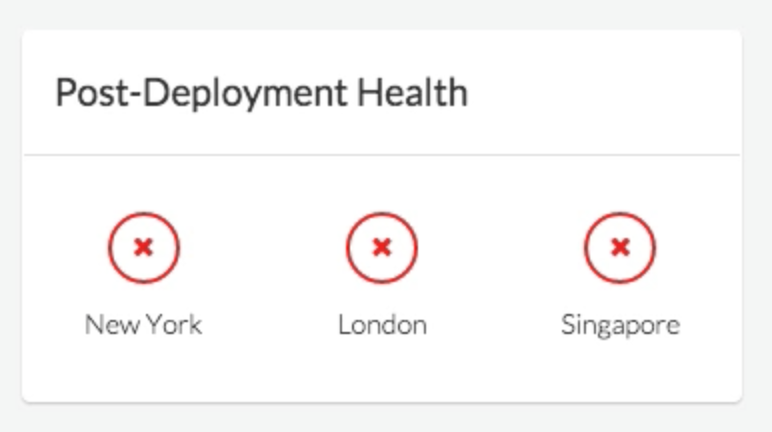
If you want to deploy to several servers at once, just add them to the project and the server will automatically participate in the deployment.
Note that when the deployment process is in progress, until the previous deployment step on each server is completed, further steps are not started, which allows the servers to remain fully synchronized with each other.
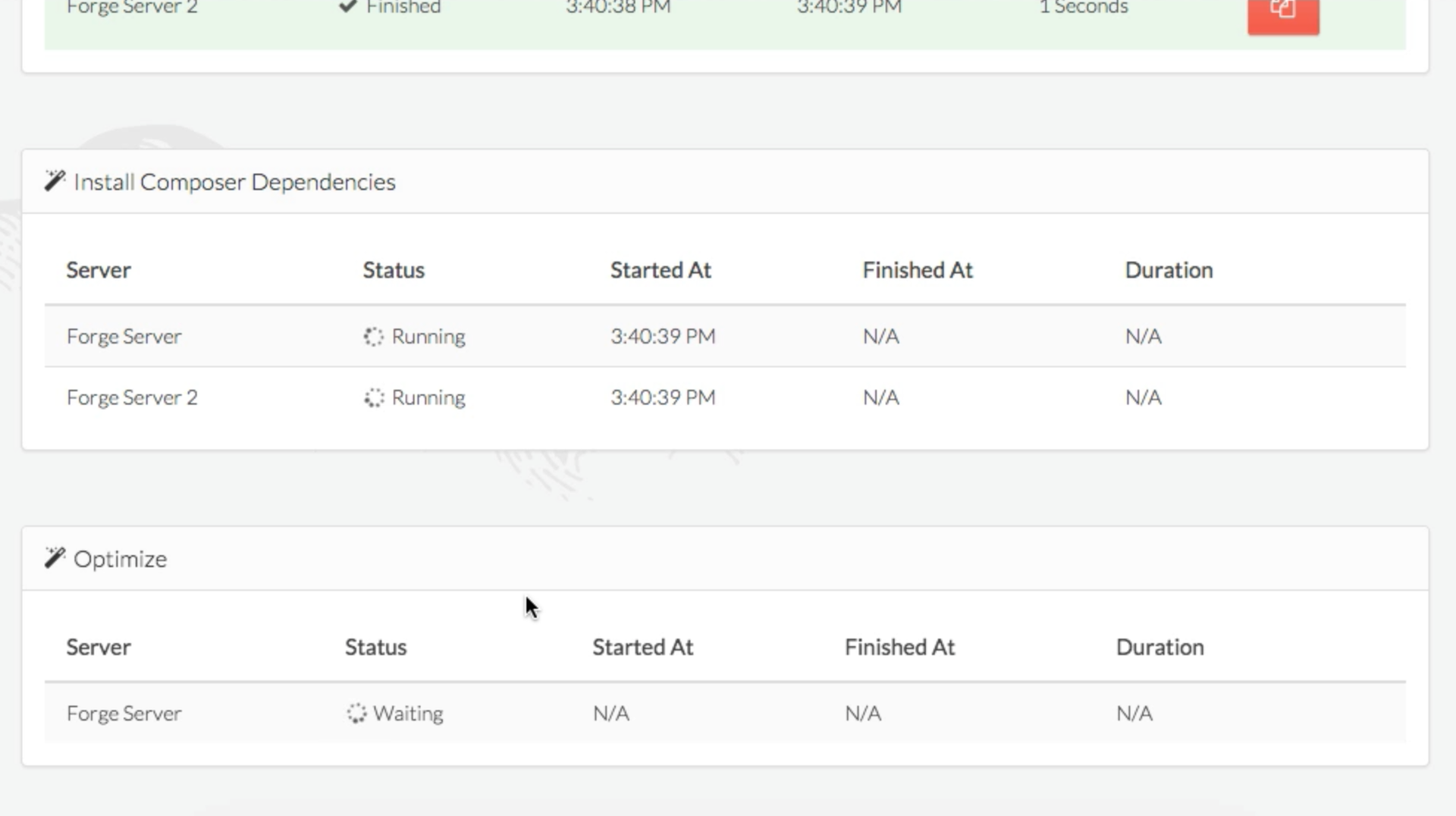
If you have a local configuration file that you want to synchronize with the servers (
Note that the file is encrypted with a password that is not stored in Envoyer, so do not lose the “Environment Key”.
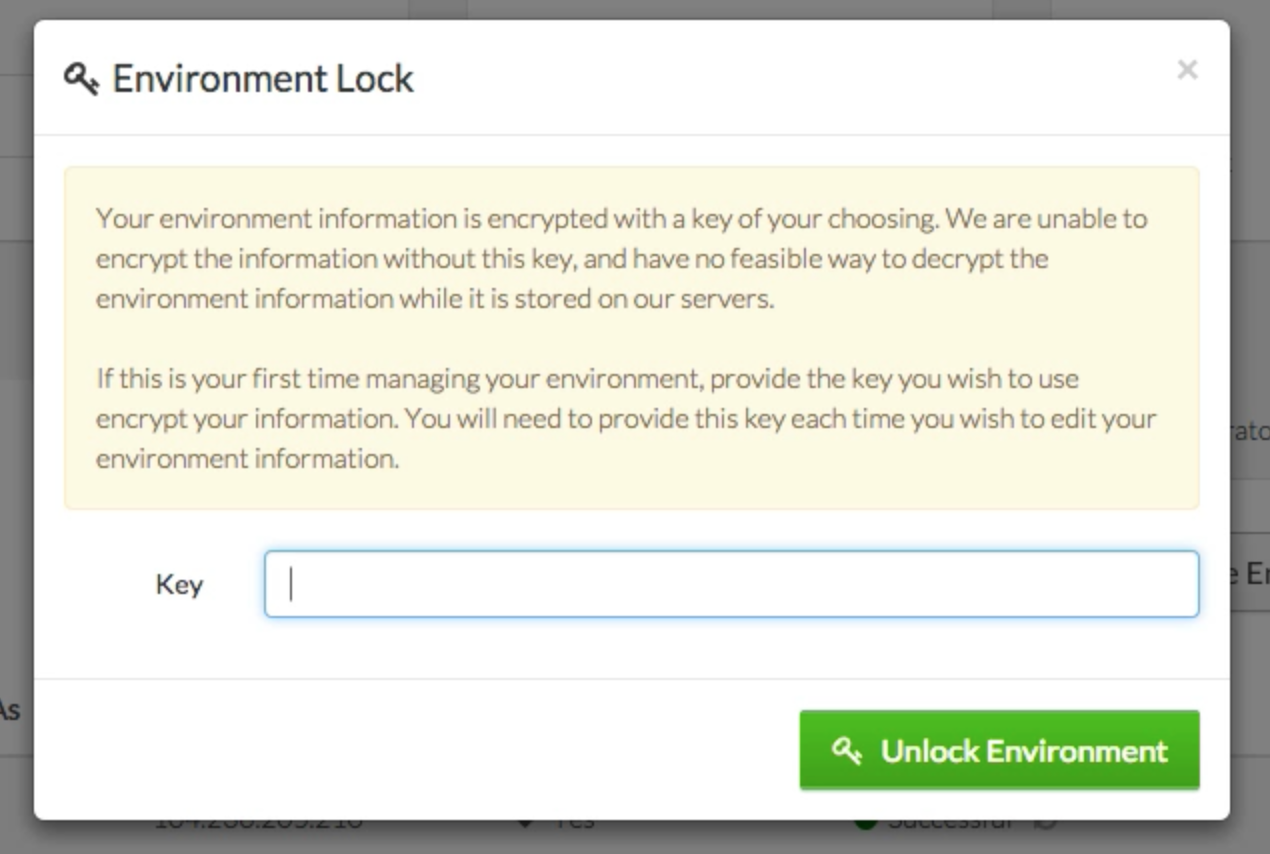
As soon as you enter the password, you will be given a text field, which is essentially a code editor. Write what you need in this field, and the contents will be saved to a file (
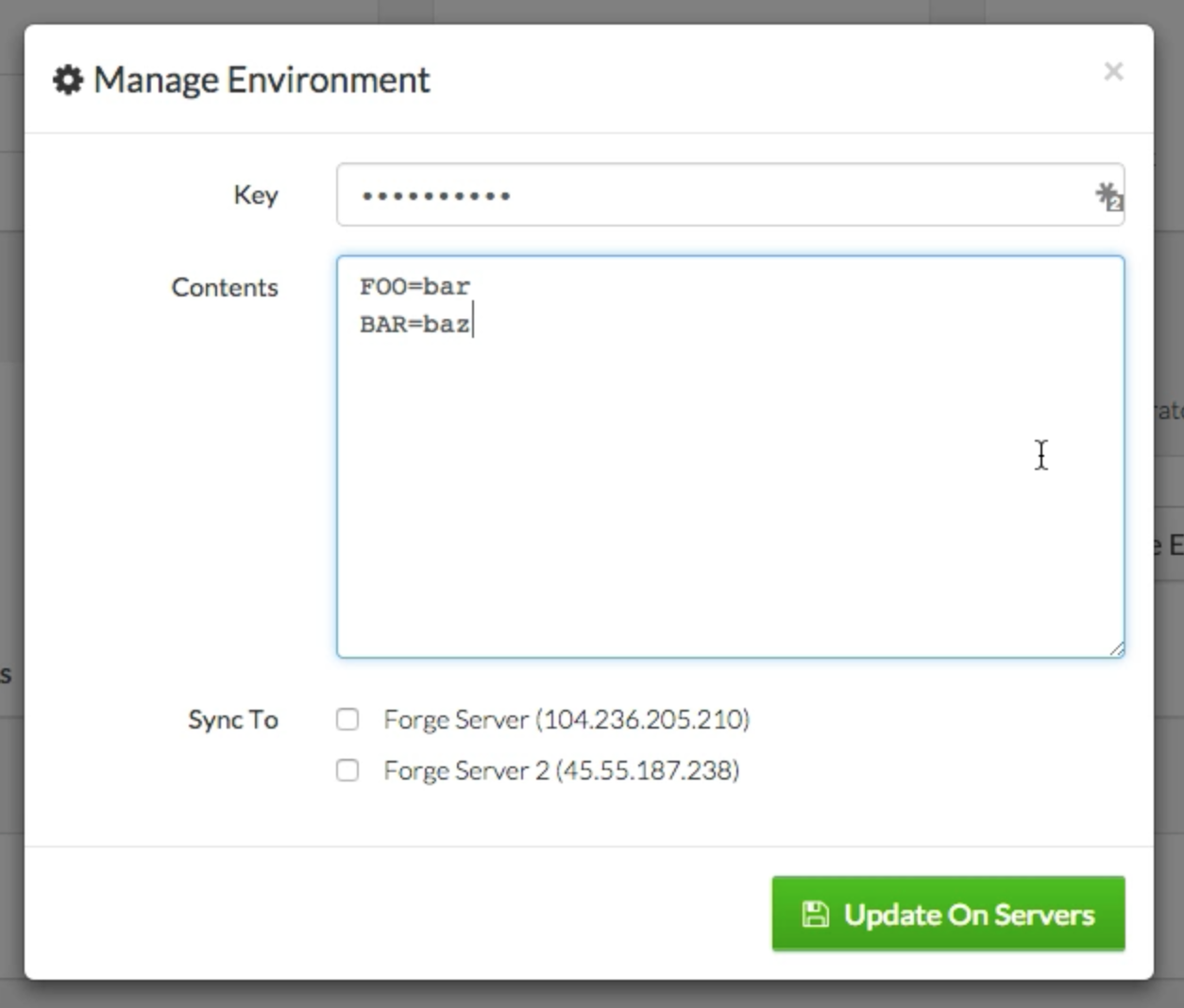
Now select the servers you want to save it to and save.
Envoyer will save this file to the root of the project on the servers and create all the necessary symbolic links.
In the “Notifications” tab, you can configure Envoyer to notify you of important events. Envoyer can currently notify in Hipchat and Slack.
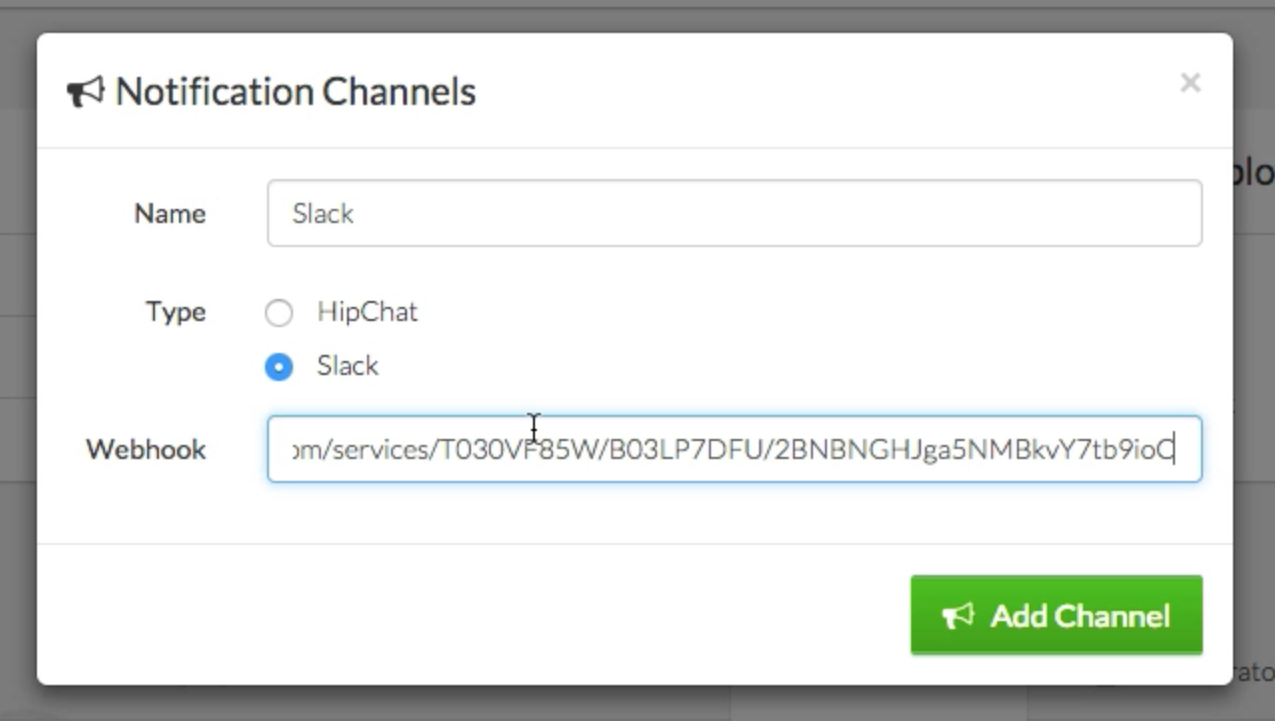
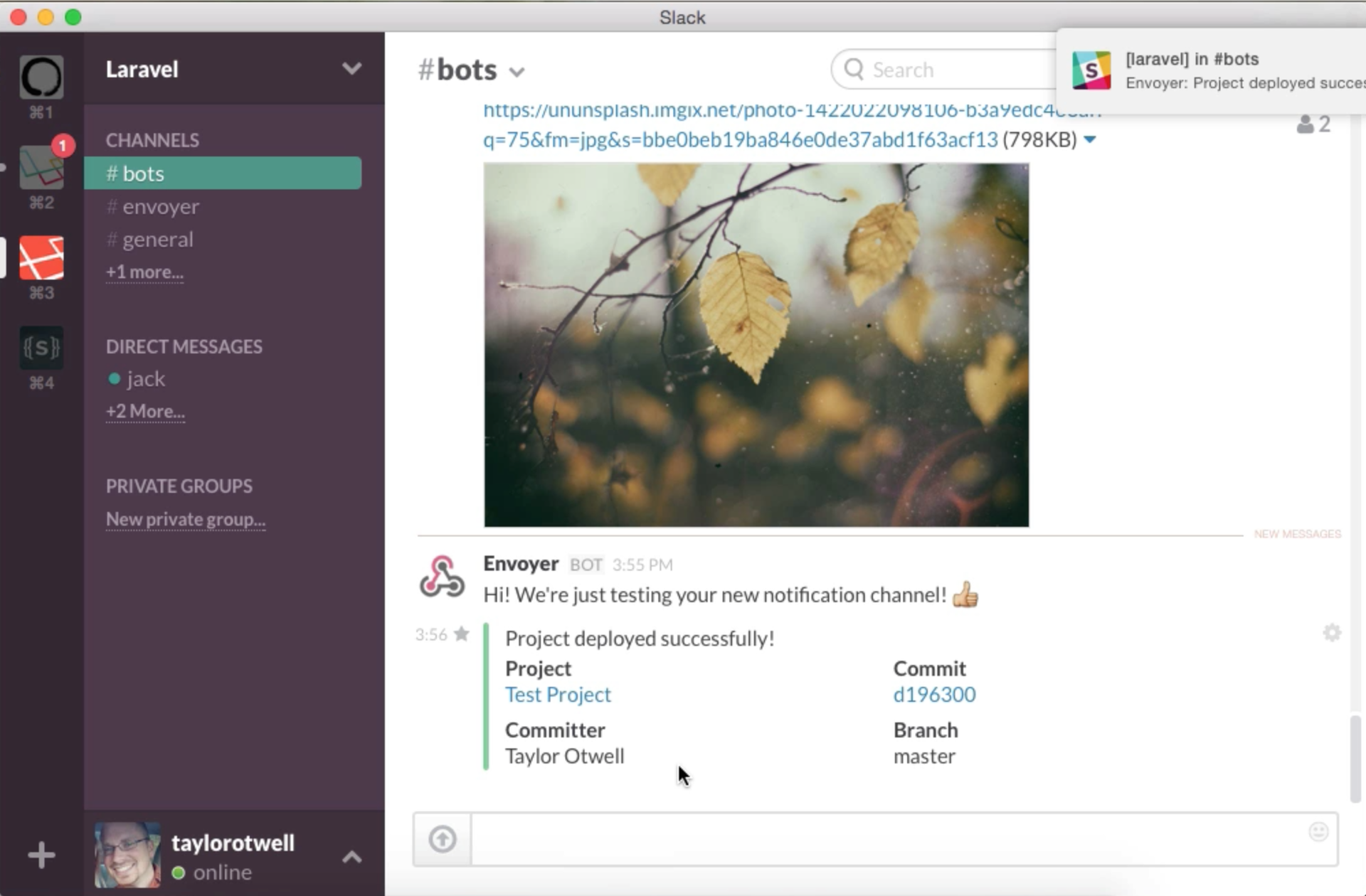
One of the biggest challenges in managing server health is ensuring that all cron tasks always work. Envoyer Heartbeats allows you to set the condition that if the specified URL responds with the specified frequency, then cron work is "alive". If there is no ping, Envoyer will notify you of this.
To add a Heartbeat, in the Heartbeats tab, click on the Add Heartbeat button .
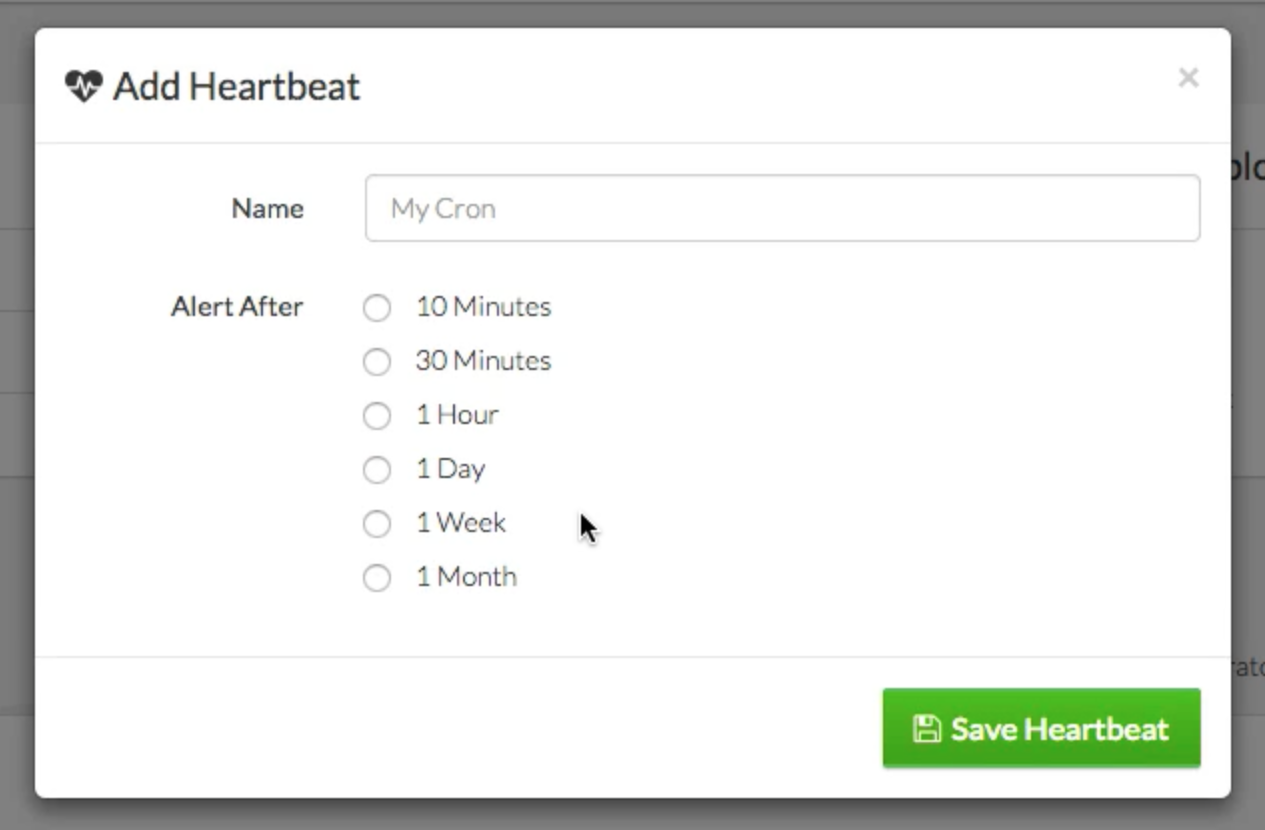
You can specify a name and specify the frequency with which it is expected to receive ping from a cron task.

Once you add it, the status will be Healthy. Until the specified time has passed, the status will remain Healthy. That is, if you select 10 minutes, it will remain Healthy for 10 minutes after creation.
Each Heartbeat has its own unique URL, which can be obtained on the Heartbeats tab. It will be in the following format:
In a regular cron file, you can do this as follows to ping a Heartbeat:
If you use Laravel, in the latest version a method has been added to the scheduler

This is what the notification looks like if there is no ping:

Envoyer allows an unlimited number of people to access your servers. If someone in your team wants to work with you on the deployment of servers, but does not want to create your account with the details of the payment card, you can create an account by selecting “I'm just collaborating with others.” when registering.

Each project has a Collaborators tab where you can add people by indicating their email.
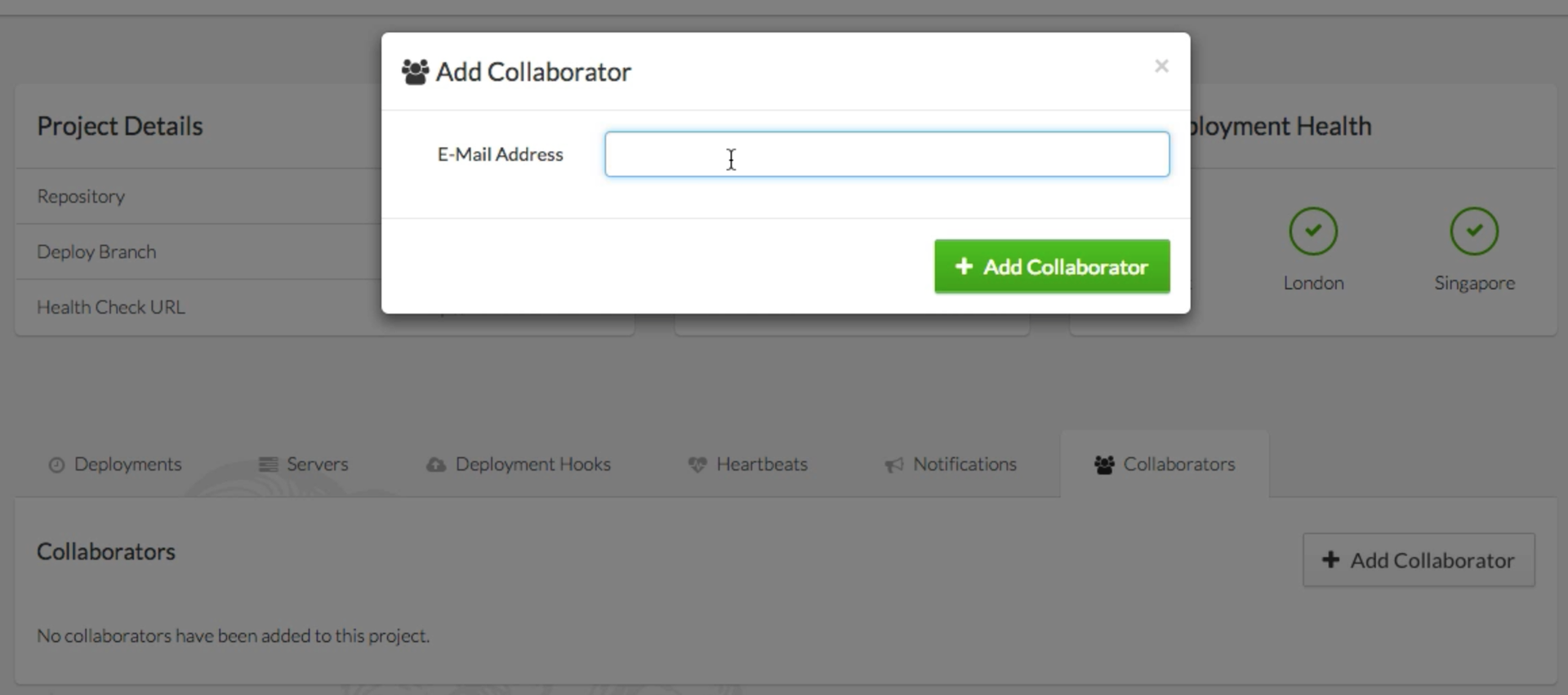
Note that these people will have access to all functions except deleting the project.
Not. Envoyer does not manage servers. But he will make a great pair of Forge.
After adding a new server, Envoyer will give you the SSH key that you need to add to the file of the
Oh sure. True, some automatic settings will not work. For example, the automatic creation of symbolic links to a folder
No, just launch the site without connecting to any repository. Envoyer will do the rest.
Envoyer will notice this and notify you about it. Deploy will be canceled.
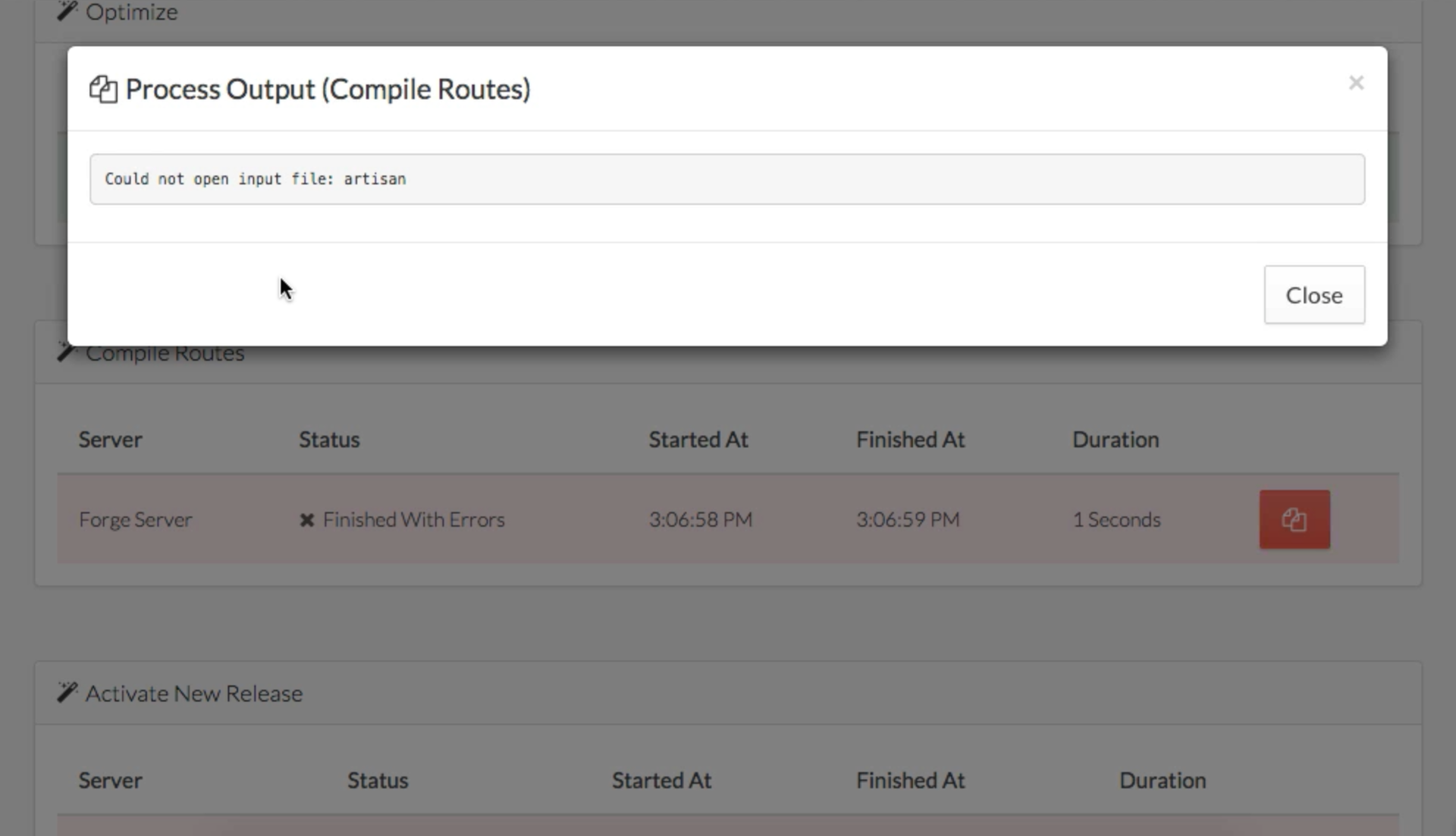
Meet Envoyer.io (Part 1)
This section will describe the more advanced features of Envoyer.

Customization of deploy hooks
Envoyer has 4 steps in the deployment process, and you, in turn, can execute any of your scripts before and after any of these steps. These steps are: Clone a new release , Install composer dependencies , Activate a new release, and Remove old releases .

Near each step there is a “gear” button, clicking on it brings you to the next screen:

There you can add hooks before and after the selected step. Click on Add Hook in the part you need.

As you can see, for each hook you can specify your name, specify the user under which you want to execute the script, and the body of the hook, which has access to the variable
{{release}}, which stores the path in the folder of the latest release (for example, /home/my-user/website.com/releases/20150316083301). Note that you can also use drag & drop to change the execution order of hooks.

Cancellations
But what if you performed a new deployment and realized that you had broken everything? Normally, you would have to connect to the server via ssh,
git log, looking to the right you commit to copy the hash of a commit git checkout THAT_HASH, composer installand only then, perhaps, would have calmed down for a few minutes. Using Envoyer, your previous release will be operational in the folder
releases. Just go to the dashboard of your project, find the deploy that deployed the working code and click the “Redeploy” button. A symbolic link currentwill simply point to the working folder in the folder releasesand it will work again.
Health
You might notice the Post-Deployment Health section on the project dashboard. There are icons for New York, London and Singapore - three regions from which Envoyer checks the availability of your application. Until you enter the Health Check URL, these icons will be question marks.

Each project can have a Health Check URL that will be called by Envoyer after each deployment. You can edit this URL in the project settings.

After the deployment, Envoyer looks at the HTTP response from the specified URL, and check if the response code is
200(OK). If so, then Envoyer considers the app “healthy.” You can specify the home page of your site or make a special test URL that can fully indicate whether your server is “healthy”.If all is well, then you will see green checkmarks.

If something breaks, you will see red crosses (and then you most likely will need the “Cancellations” section):

Deploy to multiple servers
If you want to deploy to several servers at once, just add them to the project and the server will automatically participate in the deployment.
Deployment stages
Note that when the deployment process is in progress, until the previous deployment step on each server is completed, further steps are not started, which allows the servers to remain fully synchronized with each other.

Synchronization of environment settings
If you have a local configuration file that you want to synchronize with the servers (
.envin Laravel 5, .env.phpin Laravel 4), click the Manage Environment button in the project dashboard. Note that the file is encrypted with a password that is not stored in Envoyer, so do not lose the “Environment Key”.

As soon as you enter the password, you will be given a text field, which is essentially a code editor. Write what you need in this field, and the contents will be saved to a file (
.envif you selected the project type Laravel 5 or Other, and .env.phpif the project type - Laravel 4). 
Now select the servers you want to save it to and save.
Envoyer will save this file to the root of the project on the servers and create all the necessary symbolic links.
Notifications
In the “Notifications” tab, you can configure Envoyer to notify you of important events. Envoyer can currently notify in Hipchat and Slack.


Heartbeats
One of the biggest challenges in managing server health is ensuring that all cron tasks always work. Envoyer Heartbeats allows you to set the condition that if the specified URL responds with the specified frequency, then cron work is "alive". If there is no ping, Envoyer will notify you of this.
To add a Heartbeat, in the Heartbeats tab, click on the Add Heartbeat button .

You can specify a name and specify the frequency with which it is expected to receive ping from a cron task.

Once you add it, the status will be Healthy. Until the specified time has passed, the status will remain Healthy. That is, if you select 10 minutes, it will remain Healthy for 10 minutes after creation.
Ping heartbeat
Each Heartbeat has its own unique URL, which can be obtained on the Heartbeats tab. It will be in the following format:
beats.envoyer.io/heartbeat/203849102395790125In a regular cron file, you can do this as follows to ping a Heartbeat:
php yourfile.php && curl https://beats.envoyer.io/heartbeat/203849102395790125
If you use Laravel, in the latest version a method has been added to the scheduler
thenPing()that allows you to ping any URL after completing the cron task. This is perfect for Heartbeats: 
This is what the notification looks like if there is no ping:

Teamwork
Envoyer allows an unlimited number of people to access your servers. If someone in your team wants to work with you on the deployment of servers, but does not want to create your account with the details of the payment card, you can create an account by selecting “I'm just collaborating with others.” when registering.

Each project has a Collaborators tab where you can add people by indicating their email.

Note that these people will have access to all functions except deleting the project.
FAQ
Will Envoyer be a replacement forge?
Not. Envoyer does not manage servers. But he will make a great pair of Forge.
How does Envoyer log in to the server?
After adding a new server, Envoyer will give you the SSH key that you need to add to the file of the
authorized_keysdesired userCan I use Envoyer with a non-Laravel project?
Oh sure. True, some automatic settings will not work. For example, the automatic creation of symbolic links to a folder
storage. But this can be achieved using hooks.If I use Forge, do I need to connect the site to the Git repository in Forge?
No, just launch the site without connecting to any repository. Envoyer will do the rest.
What happens if an error occurs in any deployment step?
Envoyer will notice this and notify you about it. Deploy will be canceled.

